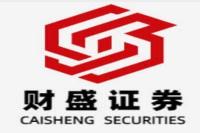Decoding China's Economic Signals: A Deep Dive into Supply, Demand, and the Path to Recovery (Meta Description: China's economy, supply chain, demand, economic recovery, investment, consumption, industrial growth, policy impact, economic outlook)
Imagine this: You're navigating a complex economic landscape, a rollercoaster of fluctuating numbers and policy shifts. The recent economic data from China feels like trying to decipher a cryptic message, a mix of encouraging signs and lingering uncertainties. But what if you had a clear, insightful roadmap? What if you could understand the underlying forces shaping China's economic trajectory and anticipate future trends? This in-depth analysis will equip you with the expertise to navigate this intricate terrain, offering a nuanced perspective beyond the headline figures. We’ll unravel the complexities of supply and demand, explore the impact of recent government policies, and paint a picture of China's economic future. Forget generic summaries – we’re diving deep, providing you with actionable insights and a wealth of information you won't find anywhere else. Prepare to gain a competitive edge in understanding one of the world's most influential economies. This isn't just data; it's a story, a narrative of resilience, adaptation, and the ongoing quest for sustainable growth. Let’s unlock the secrets together!
China's Supply-Demand Imbalance: A Closer Look
The recent economic report card from November paints a fascinating picture – a tale of two economies. While the supply side roared to life, fueled by a potent cocktail of government stimulus and export-driven activity, the demand side showed signs of a slight slowdown. This divergence, a common theme in recent months, reveals a critical nuance underlying China's economic recovery.
It's like watching a powerful engine straining under a slightly too-heavy load. The engine (supply) is revving, but the load (demand) isn’t keeping pace.
Let's break down this dichotomy:
Supply Side Surge:
- Industrial Production Powerhouse: November’s industrial added value remained robust, a testament to the effectiveness of the "two new" (xin) policies – measures designed to boost innovation and infrastructure. Businesses, anticipating future demand and keen to capitalize on export opportunities, engaged in significant stockpiling. This proactive approach masked underlying demand weakness. Think of it as a temporary boost, a shot in the arm rather than a sustainable long-term trend.
- Export-Oriented Growth: The "抢出口" (qiang chu kou), or "grab exports," strategy played a significant role. Chinese businesses aggressively sought overseas markets to offset potential domestic sluggishness. This highlights the international interconnectedness of the Chinese economy and its reliance on global demand. This strategy, though effective in the short term, highlights the vulnerability to global economic headwinds.
Demand Side Dip:
- Consumption Cool-Down: Consumer spending, a vital engine of economic growth, experienced a slight dip. This isn't entirely unexpected; the preemptive rush of shopping during earlier promotional events significantly impacted November's figures. It's a case of "front-loading" – people spent heavily earlier, leaving less room for spending later in the month. This emphasizes the cyclical nature of consumption patterns and the importance of understanding seasonal trends.
- Infrastructure Investment Slowdown: Infrastructure investment, another key driver of economic activity, also saw a modest decline. This slowdown is attributable to the completion of year-end projects and the temporary lull before the release of next year's special bonds and "early batch" special local government bonds. This is a predictable but temporary setback, a brief "air pocket" before the next wave of investment takes off. Think of it as a necessary pause before a renewed push.
The Policy Puzzle:
The government's counter-cyclical policies are clearly having an impact, but the results are uneven. While the supply-side response is impressive, the demand side needs more time to catch up. This underlines the delicate balancing act policymakers face: stimulating growth without triggering inflation.
The Central Economic Work Conference: A Blueprint for Recovery
The Central Economic Work Conference's prioritization of expanding domestic demand marks a significant shift in policy focus. This underscores the government's commitment to addressing the supply-demand imbalance and fostering more balanced, sustainable growth. The emphasis on domestic demand signals a strategic move away from over-reliance on exports and a commitment to cultivating a strong domestic market. This is a long-term strategy, a shift in gears rather than a sudden burst of speed. The government is betting on a future where internal consumption is a major driver of economic growth, a bold step that reflects a deeper understanding of the economy's evolution.
Looking Ahead: Bridging the Supply-Demand Gap
The coming year will be crucial in determining whether China can successfully bridge the supply-demand gap. The success of this effort hinges on several factors:
- Effective Implementation of Policies: The government's ability to translate its policy intentions into tangible results will be paramount. This includes ensuring the smooth and efficient disbursement of funds for infrastructure projects and creating a supportive environment for consumer spending. This is not just about money; it's about effective execution.
- Global Economic Conditions: The global economic climate will undoubtedly impact China's export-oriented sectors. A global slowdown could dampen export demand, putting pressure on the supply side. The interconnectedness of the global economy highlights the importance of international cooperation and stability.
- Consumer Confidence: Restoring consumer confidence is crucial for boosting domestic demand. This requires a combination of factors, including stable employment, rising incomes, and a positive outlook on the future. This is a challenge that requires addressing not only economic but also social and psychological factors.
Frequently Asked Questions (FAQs)
Here are some frequently asked questions about China's economic situation:
Q1: Is China's economy slowing down?
A1: While recent data shows some softening in demand, it's premature to conclude a significant slowdown. The November figures reflect short-term factors like front-loaded consumption and a temporary lull in infrastructure investment. The overall picture is one of resilience, albeit with some regional variations.
Q2: What is the impact of government policies on the economy?
A2: Government policies are playing a significant role, particularly the "two new" policies aimed at boosting innovation and infrastructure. While these policies have stimulated the supply side, the impact on demand still needs more time to fully manifest. The effectiveness of the policies largely depends upon effective implementation and supportive global economic conditions.
Q3: How important is domestic demand for China's economic growth?
A3: Domestic demand is increasingly crucial for China's sustainable economic growth. The Central Economic Work Conference's emphasis on expanding domestic demand signifies a strategic shift away from export reliance toward a more balanced growth model. This is a long-term strategic play, aiming to reduce vulnerability to external shocks.
Q4: What are the risks to China's economic outlook?
A4: Key risks include global economic headwinds, potential disruptions to supply chains, and the need to effectively manage inflationary pressures while stimulating demand. Maintaining stability in the face of these challenges is crucial for continued growth.
Q5: What can we expect in 2024 for the Chinese economy?
A5: 2024 will likely see a continued effort to bridge the supply-demand gap. The success of this effort will depend on effective policy implementation, global economic stability, and a boost in consumer confidence. Expect a cautious optimism, with continued government support and efforts to nurture sustainable economic growth.
Q6: How can businesses navigate this complex economic environment?
A6: Businesses should focus on diversifying their markets, strengthening their supply chains, and adapting to the changing consumer landscape. A nuanced understanding of the economic situation and proactive risk management strategies will be essential for success.
Conclusion: Navigating the Course to Recovery
China's economic journey is a complex one, a narrative of both challenges and opportunities. While the recent economic data reveals a fascinating divergence between supply and demand, it's not a cause for alarm. Instead, it's a valuable opportunity to examine the underlying dynamics and adjust strategies accordingly. By understanding the interplay of government policies, global trends, and domestic consumption, we can gain a clearer perspective on the path to recovery. The road ahead may have its bumps, but the long-term prospects for China's economy remain strong, driven by a government committed to fostering sustainable and balanced growth. The key is navigating the complexities and adapting to the dynamic nature of the economic landscape. Remember, this isn't just about numbers; it's about understanding the human element, the intricate web of factors that shape economic realities.



